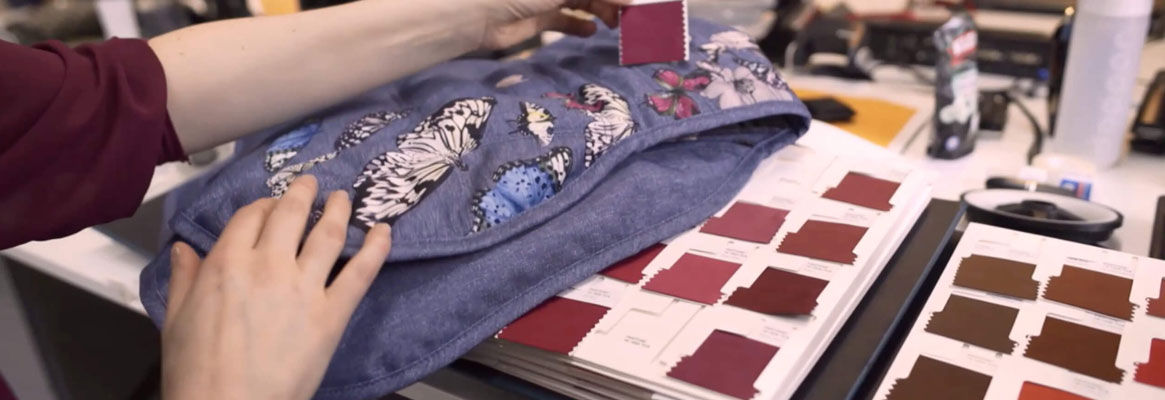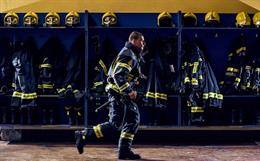Laboratory Color and Appearance Measurement,
Faculty of Textile Science, Technical University of Liberec
ABSTRACT
Sunburn, skin cancer, prematureaging, and suppression of the immune system are some of the harmful effects ofacute and cumulative exposure to ultraviolet radiation (UVR). A decrease of 1%in ozone would lead to increases in the solar UVR at the earths surface andmay eventually lead to a 2,3% increase in skin cancer. Wearing clothing, hats,and other protective apparel during sun exposure may reduce risks associatedwith overexposure. However, fabrics used in summer time apparel often provide poorprotection against solar UVR, because they are usually made from light tomedium weight fabrics.
Our contribution is not to developof new UV protective materials, but with advantage use well-known photo chromicdyes or pigments for constructions of new textile based sensors as integratedparts of summer clothes. In our study we would like detect not only UVradiation with sensors as indicators, but also detector of quantity UVradiation dose. We have prepared for this study concentration scale of differentUV absorbers and different photo chromic dyes. We will show comparison ofsensitivity modulation of our UV textile based sensors with measuring units(spectroradiometers) and reproducibility.
Key words:
INTRODUCTION:
In present time become worse livingconditions and increase harmful pollutants in environment, which cannon-reversible damage our health and jeopardize full quality our life. Bigattention is given in research area respectively in development and perfectionof protective clothes specially their barrier features. Protective barriers weunderstand how the clothes or textiles protects wearer against above mentioneddangerous conditions and if the protection is only partial or the protection is time limited by ambient conditions. Most of protective clothes are not developedfor long time wearing. During development of these barrier structures we haveto keep in our mind full comfort of acting persons without limitation. Some of protective clothes are equipped by electronics, respectively other sensors or devices, whichmonitoring and quantify dangerous substances in environment. In present time is big attention given to miniaturization of electronics and also flexibility theirconnection with computing units [1].
Above mentioned describe concept of protective clothes we call as intelligent structure. Disadvantage of this intelligent structureis no adequate response on the external stimulus, there is only monitoring ofexternal dangerous conditions. This structure we call as passive intelligenttextile structure.
Sensors and textile structures,which react adequate response and they are able modulate protective degree inaccordance on the external stimulus (change of intensity UV, temperature, press, electrical field etc.) is called as SMART textile. As example of passive intelligenttextiles are optical fibres, which leading the not only signal, but they arealso sensitive on the deformation, concentration of substances, press, electric power etc. As example of active intelligent textiles could be textiles whichreact by change own colour in dependence on external stimulus (light,temperature) and called as a chameleonic textiles or heat containing textiles,which are able to store or slack energy according external temperature.
Moreover textile based sensors andactive protective textiles has advantages that textile structure is easycustomizable by sewing, thermal bonding or gluing. Also there are advantages ofeasy maintaining (washing, chemical drying) and low specific weight with goodstrength, tensibility and elasticity. Good features are also workabilitywithout change of technology of production and extremely large specificsurface. Big advantages are possible integration these types of sensors intosystem of protective clothes and also their price availability. From thesereason is this article directed to research of textile-based sensors with photochromic behaviour, respectively to study of dynamic behaviour and modulation ofsensitivity photo chromic sensors.
In this work is described newdefinition of colour reversible hysteresis, which is described by hysteresis ofcolour change curve. This colour hysteresis curve is described by kineticmodel, which defines the speed of colour change initiated by external stimulus UV light. Kinetic model verification is done for textile sensors with photochromic pigment applied by textile printing, fibre mass dyeing.
MATERIAL AND METHODS:
Our experiment was divided to 3 parts and every part is directed to special form of application of photochromic pigments and study of photochromic behaviour from point of kinetics and dynamics in different mediums:
Application of photochromic pigments by textile printing - PTP
Application of photochromic pigments by mass dyeing - NWT
Study of photochromic pigments behaviour in solution PPS
In our research we follow the develop simple textile based sensor sensitive to UV light and kinetic study of behaviour and main attention was given to possibility use the technology of textile printing by stencil printing. This experiment was completed the study of influence of UV absorbers and ability of properties modulation of sensors. Also was studied dependence of Colour change intensity on concentration of photochromic pigment. Above mentioned studies was necessary complete by study of fatigue resistance in dependence on Intensity of source and time of exposition including also classic tests of light fastness on Xenon test and dry staining fastness, which are the same as for normal classic pigment use in textile finishing and these tests are also limitation of application offered sensors.
In second part of our experiment was studied change of photochromic behaviour tested pigments in non-woven textiles produced by technology Melt Blown (mass dyeing) and in third part was checked the photochromic behaviour used pigments in solution via measurement of transmission characteristics as completive study how is changed the photochromic response via kind application. For experiment was used commercial photochromic pigments PPG-Photosol 33672 (P1), PPG-Photosol 7106 (P2), PPG-Photosol 749 (P3), PPG-Photosol 0265 (P4) and PPG-Photosol 5-3 (P5). Chemical structure illustration is shown on FIG. 1 and FIG. 2 [2].
As was mentioned in our experiments were prepared two kinds of solid media textile substrate with photochromic pigments. Illustrations of fixation of photochromic pigments on the textile substrates are shown on FIG. 3-4:
Besides measurements of prints and NWT via classical spectrophotometer Spectraflash 300UV was used arrangement of AVANTES S2000 spectrometer due to short time, continuous measurement respectively. S2000 arrangement make possible using different light sources for tested samples illumination. Same possibility was obtained via modification of CS-5 spectrophotometer for measurement of photochromic solutions.
Because is relationships between
remission and concentration of colorant agent non-linear, in colour measurement
is obviously used relation between Kubelka-Munk function (K/S) and
concentration, colour change intensity I respectively. Colour change
intensity, I that we used, is defined as following equations:
For description of kinetic behaviour of our UV sensors we used first class kinetic model as is shown in following equations [3]:
Exposition: Relaxation:
From these equations is possible to calculate halftime of colour change t1/2 [4] and colour hysteresis area Hp:
,
As is from equation (6) evident that colour hysteresis area Hp arise by time reverse of reversion data as is shown on the FIG. 6.
RESULTS:
Data on both figures 5 and 6 were obtained for lowest intensity of illumination E (979,3 lx). On the FIG. 6, we can see, that already for this E in the colour change speed is higher during of exposition than reversion phase. In our study we prepare new view on the relationship between intensity and time of exposition, time of relaxation respectively. Name of this new kind of graphs is colour hysteresis area Hp. When we will test relationship between halftime of colour change t1/2 and intensity of illumination E, we obtain decreasing linear relation - FIG.7. That means time of colour change is shorter during intensity of illumination increasing.
Linear relation we obtain also via dependency of hysteresis area on intensity of illumination E. On the FIG. 8, is shown dependences hysteresis area relation to UV absorber dose also. It is evident, that increasing of UV absorber dose gives decreasing of Hp.
As was mentioned before used measuring units were prepared for measuring colour change of tested samples under different light sources. On FIG. 9 and FIG. 10 are shown results for photochromic pigments solutions PPS and prints PTP.
CONCLUSION:
This paper is introducing study of dynamic properties of photo chromic textile sensors. In our study we prepare new view on the relationship between intensity and time of exposition, time of relaxation respectively. That means colour hysteresis area Hp is linear related to the intensity of illumination E. Via this relation we demonstrate the possibility of flexible textile-based sensors construction in area identification of radiation intensity. Beside of this one, we demonstrate differences between photochromic pigments behaviour in solution and prints on textiles: differences between spectral power distribution of light source sensitivity of this ones. Bi-exponential functions, which are used in Hp calculation, well described the kinetics of colour change intensity of photochromic pigments. They give good fits to the growth curves as well as to the relaxation ones.
REFERENCES:
- Tao, X.: Smart fibres, fabric and clothing, The Textile Institute: Cambridge England (2001)
- Van Gemert, B.: personal note, 16. July 2004
- Vikova, M.: UV sensible sensors based on textile fibres, International Lighting and Colour Conference, 02 to 05 November 2003, Cape Town, South Africa
- Rais, J.: Basic calculation in coloration technology (in Czech), SNTL: Prague (1968)
ACKNOWLEDGMENTS
The Czech Ministry of Education as research project VCT LN00B090 supported this work.
About the author:
Address: Martina Vikov, Laboratory Colour and Appearance Measurement,
Faculty of Textile Science, Technical Univ. of Liberec,
Hlkova 6, CZ-461 17 Liberec, Czech Republic
E-mail: martina.vikova@tul.cz
To read more articles on Textile, Industry, Technical Textile, Dyes & Chemicals, Machinery, Fashion, Apparel, Technology, Retail, Leather, Footwear & Jewellery, Software and General please visit http://articles.fibre2fashion.com
To promote your company, product and services via promotional article, follow
this link: http://www.fibre2fashion.com/services/article-writing-service/content-promotion-services.asp







